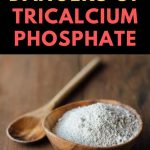
Contents
Side Effects of Propecia (finasteride)
Propecia (finasteride) treats male pattern baldness or androgenetic alopecia in males. It lowers levels of dihydrotestosterone (DHT), a hormone that shrinks hair follicles.
It slows hair loss in 88% of men and helps hair regrow in 66%. Another finasteride oral dosage form, Proscar or 5 mg finasteride tablets, is FDA approved for benign prostatic hyperplasia (BPH) but not for androgenetic alopecia.
Common side effects of Propecia include:
- breast enlargement
- decreased sex drive
- erectile dysfunction
- ejaculation disorders
Serious side effects of Propecia include:
- increased risk of high-grade prostate cancer
- increased risk for male breast cancer
Propecia interacts with carbamazepine, rifampin, and St. John’s wort, reducing blood levels. Itraconazole, erythromycin, and similar drugs increase blood levels of Propecia.
Pregnant mothers should not use or handle Propecia due to potential harm to the male fetus. Propecia prevents the conversion of testosterone to DHT, which is necessary for male genitalia development.
It is unknown if Propecia is excreted in breast milk, so it should not be used by women while breastfeeding.
Important Side Effects of Propecia (finasteride)
The most common side effects of finasteride are:
- breast enlargement
- decreased libido
- erectile dysfunction
- ejaculation disorders
Propecia (1 mg finasteride) was approved by the FDA for male pattern baldness in December 1997. Different dosages, such as Proscar or 5 mg finasteride tablets, are only approved for BPH treatment.
Side Effects of Propecia (finasteride) List for Healthcare Professionals
Clinical Trials Experience
Adverse reaction rates observed in clinical trials cannot be directly compared between different drugs.
Clinical Studies For Propecia (Finasteride 1 mg) In The Treatment Of Male Pattern Hair Loss
In three 12-month clinical trials, 1.4% of patients taking Propecia were discontinued due to adverse experiences considered possibly, probably, or definitely drug-related.
Clinical adverse experiences reported in ≥1% of patients treated with Propecia or placebo are shown in Table 1.
TABLE 1: Drug-Related Adverse Experiences for Propecia (finasteride 1 mg) in Year 1 (%)
MALE PATTERN HAIR LOSS
| Propecia N=945 |
Placebo N=934 |
|
| Decreased Libido | 1.8 | 1.3 |
| Erectile Dysfunction | 1.3 | 0.7 |
| Ejaculation Disorder (Decreased Volume of Ejaculate) |
1.2 (0.8) |
0.7 (0.4) |
| Discontinuation due to drug-related sexual adverse experiences | 1.2 | 0.9 |
- An integrated analysis showed that during treatment with Propecia, 3.8% of men had these adverse experiences compared to 2.1% of men treated with placebo.
- Most patients who discontinued therapy or continued therapy had resolution of these side effects.
- The incidence of adverse experiences decreased to ≤0.3% by the fifth year of treatment with Propecia.
- In a study of finasteride 1 mg daily in healthy men, a median decrease in ejaculate volume of 0.3 mL (-11%) for Propecia and 0.2 mL (-8%) for placebo was observed after 48 weeks of treatment.
- Two other studies showed that finasteride at 5 times the dosage of Propecia (5 mg daily) produced significant median decreases in ejaculate volume, but this was reversible after discontinuation of treatment.
- There were no significant differences in breast tenderness, breast enlargement, hypersensitivity reactions, and testicular pain between Propecia and placebo groups.
Controlled Clinical Trials And Long-Term Open Extension Studies For Proscar® (Finasteride 5 mg) And AVODART (Dutasteride) In The Treatment Of Benign Prostatic Hyperplasia
In a 4-year controlled clinical study, 3.7% of patients treated with Proscar 5 mg discontinued therapy due to sexual function adverse reactions.
Table 2 shows clinical adverse reactions considered possibly, probably, or definitely drug-related for Proscar 5 mg over 4 years.
TABLE 2: Drug-Related Adverse Experiences for Proscar (finasteride 5 mg)
BENIGN PROSTATIC HYPERPLASIA
| Year 1 (%) |
Years 2, 3 and 4* (%) |
|||
| Finasteride 5 mg |
Placebo | Finasteride 5 mg |
Placebo | |
| Impotence | 8.1 | 3.7 | 5.1 | 5.1 |
| Decreased Libido | 6.4 | 3.4 | 2.6 | 2.6 |
| Decreased Volume of Ejaculate | 3.7 | 0.8 | 1.5 | 0.5 |
| Ejaculation Disorder | 0.8 | 0.1 | 0.2 | 0.1 |
| Breast Enlargement | 0.5 | 0.1 | 1.8 | 1.1 |
| Breast Tenderness | 0.4 | 0.1 | 0.7 | 0.3 |
| Rash | 0.5 | 0.2 | 0.5 | 0.1 |
| *Combined Years 2-4 N = 1524 and 1516, finasteride vs placebo, respectively |
||||
- The adverse experience profiles in clinical studies and open extension studies with Proscar 5 mg were similar.
- No evidence suggests increased sexual adverse experiences with longer Proscar 5 mg treatment duration.
- During clinical trials and studies, no significant difference in breast cancer cases between Proscar and placebo groups was found.
- No significant clinical benefit was demonstrated in patients with prostate cancer treated with Proscar 5 mg, and it is not indicated to reduce the risk of prostate cancer.
Postmarketing Experience
Adverse reactions reported during post approval use of Propecia include hypersensitivity reactions, sexual dysfunction that continues after discontinuation of treatment, and breast tenderness and enlargement.


